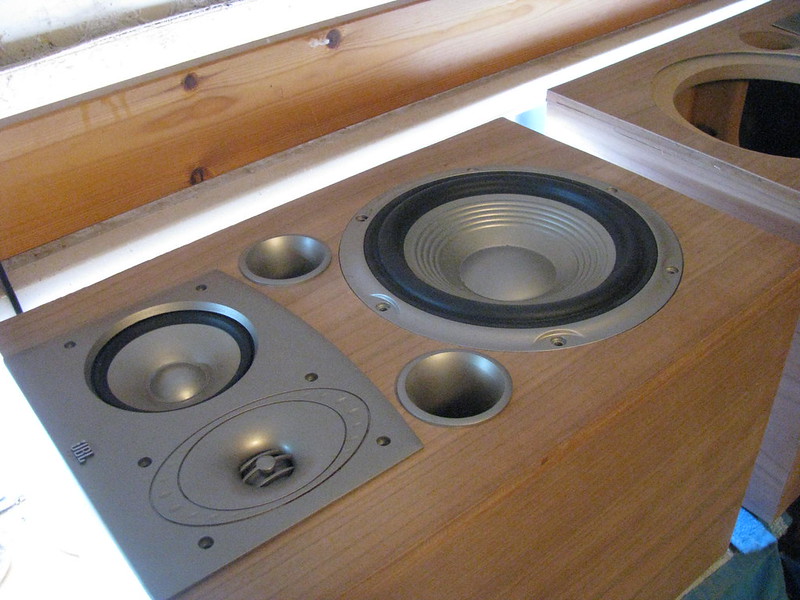We're out of the woods with the dreaded part of finding the original recesses for the drivers and trim. Before I had applied the veneer, I drilled the driver fastener holes thru from front to back. After I applied the veneer, I simply flipped the baffles and drilled the holes back thru to the front. This gave me a limit of material to clear away without studying so hard all the way around. I used a zip bit on the dremel to expose most of the screw holes, and then switched to the little dremel drum sander bit to reach close to the original edge of the recess. I left this a little proud, to get even a neater fit for the drivers.
Then it was simply a matter of installing the drivers centered evenly with all of those reveals around the fastener holes I had made. Then I just used a new blade on a utility knife and carefully scribed around from hole-to-hole intil it was mostly thru.
 IMG_9535
IMG_9535
Can maybe see how I centered the driver evenly, having multiple points of reference around the circumference of the recess to adjust evenly to. From here I used a utility knife with a new blade fr each recess. I angled the cut inward. I had to sand it to fit using a round puck of MDF wrapped with 180 grit sticky paper. I still have room to tune it even further but right now, I feel I have earned a Guinness.
 IMG_9545
IMG_9545
Same with the cavity for the mid, tweeter and faceplate. It fits so nice. There is a foam gasket that fits in here. It just snaps right into place.
 IMG_9542
IMG_9542
Drivers fit pretty much perfectly and certainly closer that factory. I consider this to be some of the upgrade. The finish will make it too tight, but I like sanding to fit there, because then I can more precisely chamfer any edges at the clear coat stage, and whatever residual imperfections there may be.
 IMG_9539
IMG_9539
I do like the look of the silver up against the cherry, and I will like it as it darkens from the finish and with age.
 IMG_9548
IMG_9548
I added CA glue to all the fastener holes. This will really tighten up the fasteners. There was one hole that was a bit strippy. . .so I added some sawdust and CA glue to it. These cabinets are turning out nice. Only way I could have improved from here was to use figured veneer, but I think this matches the hatch pretty well.
I am ultimately pleased with how this turned out. One slip here could have ruined the whole job, or at least sent me on a chase with putty and other hat tricks to fix errors.
ETA: Couldn't help it. Had to.
 IMG_9551
IMG_9551